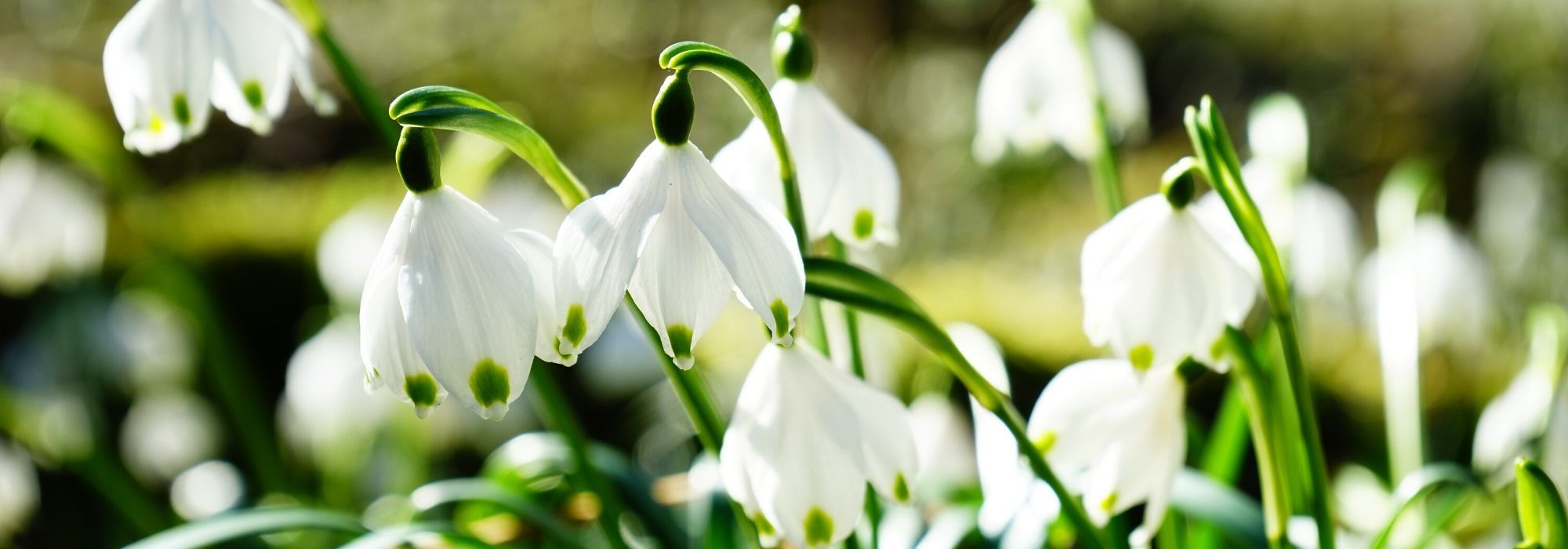
Snowflake, Leucojum: planting, growing and care
Contents
Snowdrop in a nutshell
- Snowdrop is a small hardy bulbous plant, very graceful
- In spring, summer, or autumn depending on the species, it adorns itself with delicate white bells resembling snowdrops
- Without maintenance, it naturalises very easily in cool, damp environments
- It is very easy to grow in the garden in moist to fresh soil
- It delights clear woodlands, pond edges, rockeries, wildflower beds, natural gardens, and pots
A word from our expert
The Snowflake or Leucojum is a delightful little bulbous plant that is often overlooked or forgotten, a cousin of the Snowdrop. It is distinguished by its later flowering. The Leucojum aestivum or Summer Snowflakes bloom in February-March, while the Leucojum vernum or Spring Snowflakes flower in April-May. All produce pendulous white bells, some edged with green, similar to the very vigorous Leucojum aestivum ‘Gravetye Giant’.
With its graceful silhouette and linear foliage, it thrives in partial shade in heavy, clayey soils where it will easily naturalise, forming very floriferous colonies over time. This easy-going little bulb can be planted under deciduous trees, at the edge of woodlands, in fresh borders and rockeries, by the side of a water feature, or even in pots.
Discover our collection of Snowflakes to bring a touch of freshness to your garden!
Description and botany
Botanical data
- Latin name Acis, Leucojum
- Family Amaryllidaceae
- Common name Snowflake
- Flowering March-April
- Height 0 to 0.60 m
- Exposure Sun, partial shade
- Soil type All, moist soil
- Hardiness -15-25°C
The Snowflake or Leucojum is a delicate little perennial bulbous plant from the Amaryllidaceae family, a cousin of the Snowdrop. Native to Central Europe, it can be found in cool deciduous forests, clear and fresh woods, near hedges, and in meadows. It grows spontaneously in the north-east of France and the Alps.
Of the 10 species in the Acis/Leucojum genus, to which the snowflake belongs, three are most commonly sold and cultivated in France: the Spring Snowflake (Leucojum vernum or Acis vernum), also known as “Claudinette” in France, the summer snowflake (Leucojum aestivum or Acis aestivum), and the autumn snowflake (Acis automnale). As their names suggest, they bloom in different seasons depending on the species. These are very prolific species that are easy to naturalise in moist and slightly wild areas of the garden, eventually forming lovely flowering colonies over time.
From its small bulb, this herbaceous plant forms an upright clump of 10 to 20 cm for the Spring Snowflake, up to 60 cm in height when in flower for the Summer Snowflake. The ribbon-like leaves emerge from the ground. The foliage appears early in the season, as early as February for the Spring Snowflake. It consists of 4 to 6 long fleshy leaves, linear or cylindrical, more or less narrow, lanceolate, tapered, erect, and glossy. The snowflake can be distinguished from the snowdrop by its greater number of leaves. They measure 0.5 to 15 mm wide depending on the species.
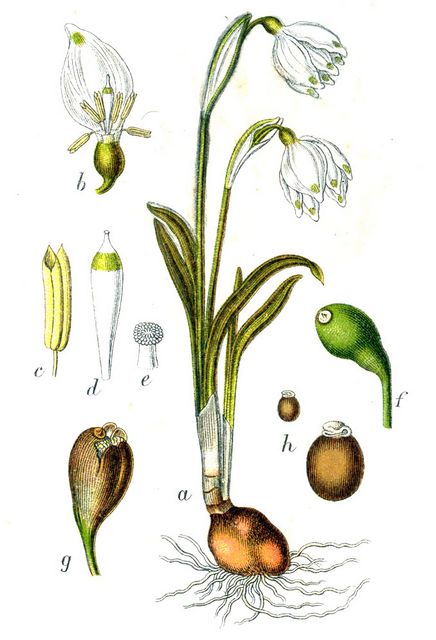
Leucojum vernum – Botanical illustration
The colour of the foliage varies according to the varieties, from glaucous green (Leucojum aestivum) to bright green. Deciduous, it yellows and then disappears after flowering, reappearing in the following season. The plant spends part of the year underground in its bulb.
This clump of graphic leaves serves as a backdrop for the flowering that occurs in February-March, after the snowdrops for the Spring Snowflakes, and between April and June depending on the regions for the Summer Snowflakes. Each bulb produces two to five stems, each bearing a solitary flower shaped like a plump, drooping bell.
Elegantly simple, these small bells measure 2 to 3 cm in diameter and have six equal white tepals with marked veins, maculated with green at the tip in the Summer Snowflakes. The Leucojum aestivum ‘Gravetye Giant’ has larger flowers than the typical species. The flowers, fresh and fragrant, sometimes emit a slight chocolate scent depending on the variety.
They make very lovely spring bouquets and last a long time in a vase once cut. After fertilisation, they transform into a green pear-shaped fruit containing the seeds: the snowflake easily multiplies through spontaneous sowing.
These modest drooping inflorescences, carried outward from the clump and inclined towards the ground, disappear with the arrival of the first warm weather. All parts of the plant are toxic… but only in case of ingestion!
Easy to cultivate, the Snowflake multiplies quite rapidly in all moist to fresh soils. It enjoys a sunny or partially shaded exposure. It is an interesting bulbous plant for a naturalistic garden, to flower a clear underwood or a difficult-to-access bank, or a cool rockery.
The spring and summer snowflakes (particularly the typical species of the Summer Snowflake) are protected plant species in France. It is therefore forbidden to uproot, cut, pick, or sell them. The bulbs contain alkaloids with anti-retroviral properties used in medicine.
Main species and varieties
Most popular
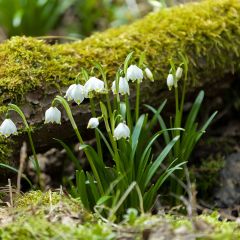
Leucojum vernum - Spring Snowflake
- Flowering time March, April
- Height at maturity 20 cm
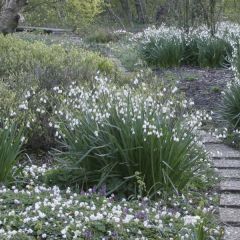
Leucojum aestivum - Summer Snowflake
- Flowering time May to July
- Height at maturity 50 cm
Our favourites
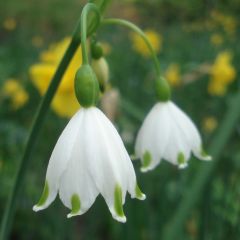
Leucojum aestivum Gravetye Giant - Summer Snowflake
- Flowering time May
- Height at maturity 60 cm
Discover other Leucojum - Snowflake
View all →Available in 1 sizes
Available in 1 sizes
Available in 1 sizes
Available in 1 sizes
Planting the snowdrop
Where to plant?
Easy to grow and very hardy (-15-25°C), the Snowflake can be cultivated almost anywhere in France. However, it prefers contrasting and sufficiently rainy climates. This small bulb enjoys the coolness of partial shade and will thrive in rich soil, even heavy and clayey, that remains moist to fresh at all times, even in summer.
Plant it in full sun in cool climates or in partial shade, especially in southern regions. Summer drought will simply cause it to disappear underground until the following spring.
Its tendency to naturalise makes it an ideal plant for creating flowering carpets, groundcovers in light woodland at the base of deciduous trees that will provide it with a little dappled shade in summer, or in the shade of a leafy hedge. It fits in anywhere in a border or a cool rockery, without smothering existing plants, such as in dense small groups at the front of a border or even in pots.
When to plant?
Plant Snowflake bulbs from September to November.
How to plant the snowflake?
The small bulbs of Snowflake should be planted in large numbers or in clumps, depending on the desired effect, in well-drained soil to prevent rotting. Plant in clumps of 10 to 30 bulbs. For mass planting, count on approximately 100 bulbs per m². Consider planting the bulbs in two or three batches, with a 15-day interval to stagger the flowering.
Using a bulb planter, plant at a maximum depth of 5 cm, and maintain a spacing of 10-20 cm.
In a lawn or large border: dig out part of the chosen area to a depth of 8-10 cm, then place the bulbs spaced about 5 cm apart. Backfill “en masse”.
In pots, spread a layer of clay balls for perfect drainage and fill with a mixture of garden soil, potting soil, and coarse sand.
Read also
Planting spring-flowering bulbsMaintenance and care
Low-maintenance, the Snowflake requires no special care.
You may mulch with a carpet of dry leaves to maintain soil moisture. Only bulbs grown in pots require regular watering.
If you wish to control propagation and avoid spontaneous sowing, cut the flower stems after flowering. Leave the yellowing foliage in place to allow the bulb time to replenish its reserves for the following spring; simply tidy the clumps in autumn or late winter.
After 3-4 years, when the foliage begins to thin, it is time to divide the large clumps to keep them vigorous.
Well-drained soil will keep the bulbs healthy and prevent rot; the Snowflake is free from pests and diseases.
Multiplication of the snowflake
Snowflake multiplies spontaneously by sowing and by bulblets each year. Division is very simple to carry out on mature clumps of at least 3 years. It helps to maintain vigorous plants and abundant flowering. Proceed after flowering, when the foliage is still green.
Division of stumps
- Lift the stumps with a fork
- Separate the bulblets one by one by hand or with a small knife, or slice a nice clump with the fork
- Replant immediately at a depth of 5-8 cm
- Firm the soil and water
Pairing ideas
Snowflakes are perfect bulbous plants for adding volume and freshness to a semi-shaded area of the garden in spring. They naturalise easily, sometimes becoming invasive, which can be a boon in a naturalistic garden, perfect for flowering a light woodland or a forgotten corner of the garden. They contribute to fresh displays.
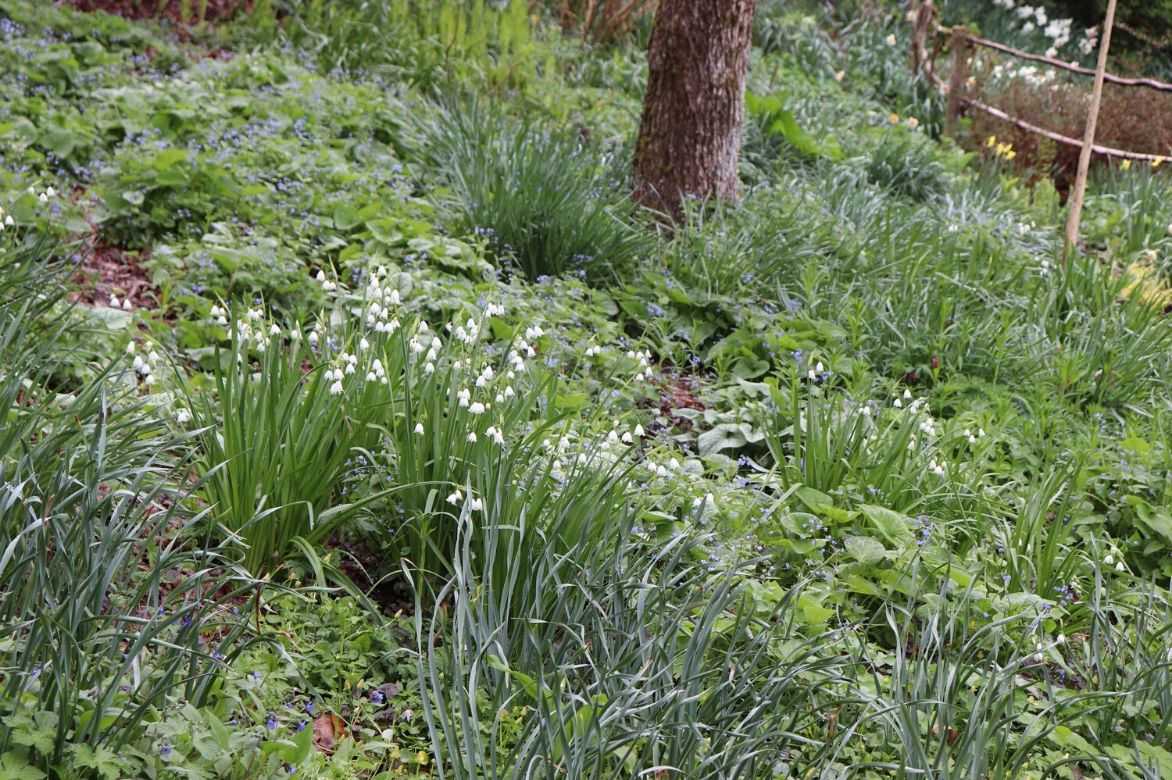
An example of pairing in a fresh woodland: Leucojum vernum with Daffodils, Brunnera macrophylla ‘Jack Frost’ and lungworts
Pair snowflakes with other early naturalising bulbs that reliably bloom each year, such as daffodils, crocuses, muscari, chionodoxa, blanda anemones, hyacinths, ipheions, or fritillaries to stagger the flowering periods.
In borders, the small bulbs of snowflakes fit in well among plants and pair nicely with lady’s mantle, asarum, heucheras, winter heathers, primroses, Vinca minor, pansies, or even Caucasian forget-me-nots.
In a fresh rockery, they will thrive alongside Cyclamen coum and small ferns.
→ Discover 7 beautiful pairing ideas with snowflakes in our article!
Useful resources
- Small bulbs, big impact! An article to discover on our blog!
- Discover our naturalising bulbs!
- Subscribe!
- Contents
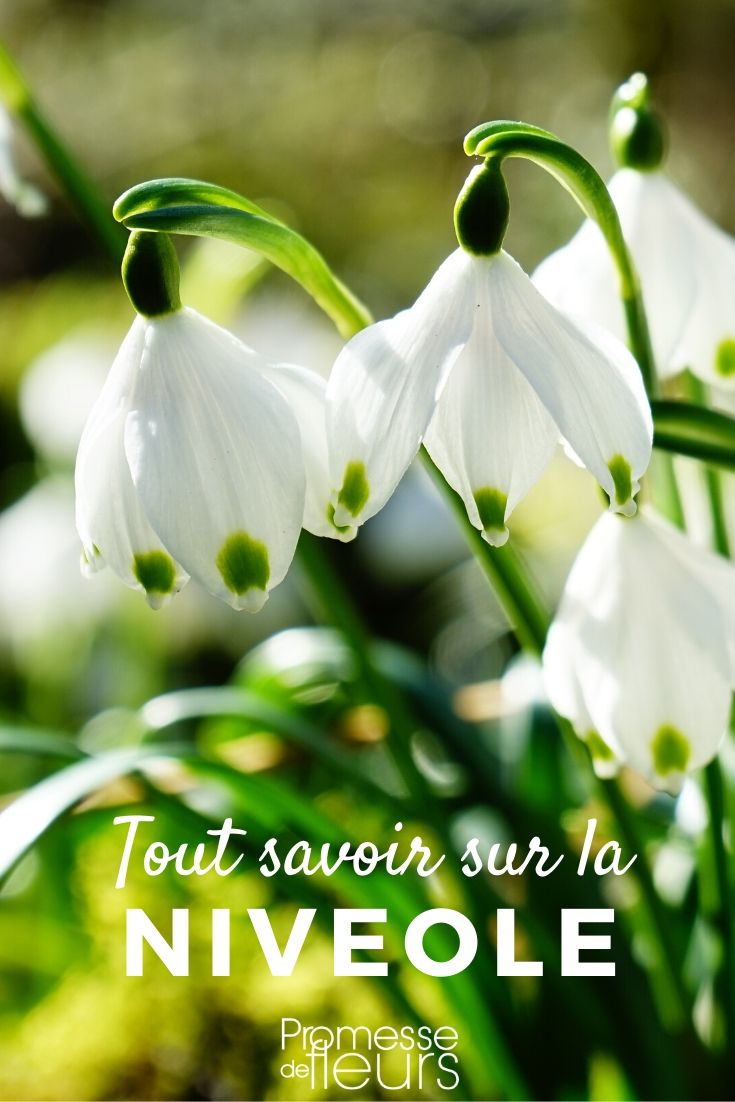































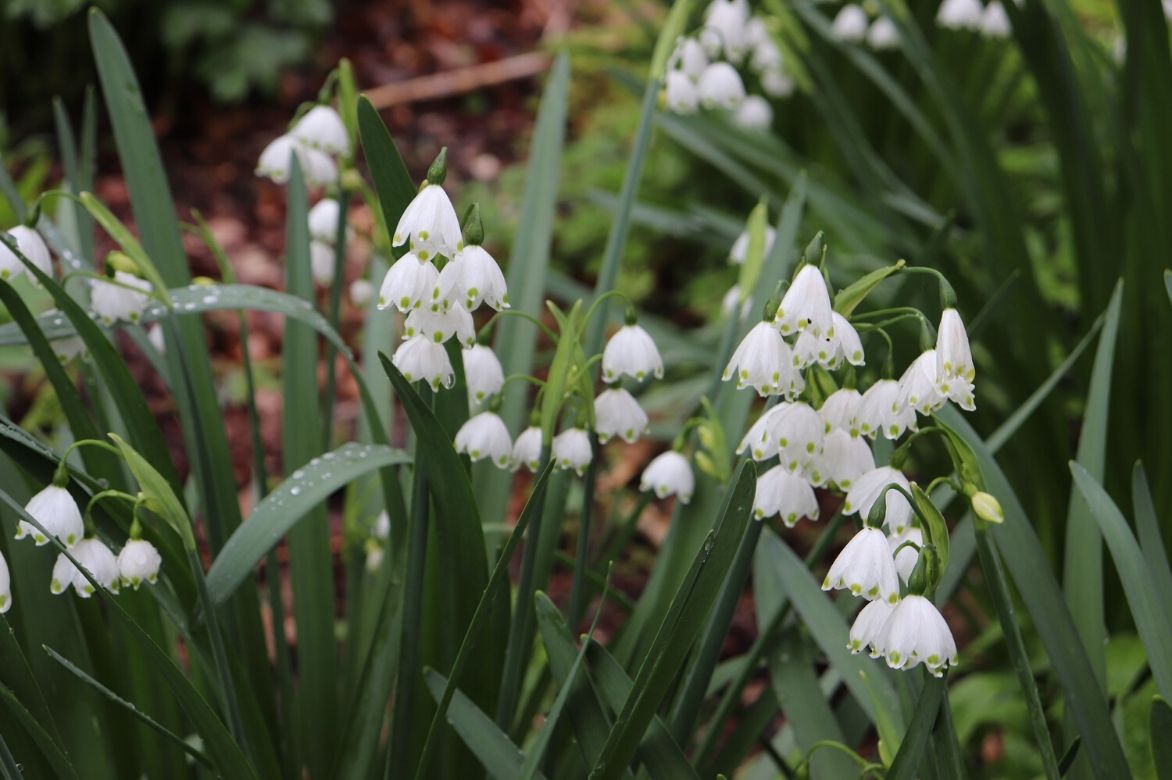



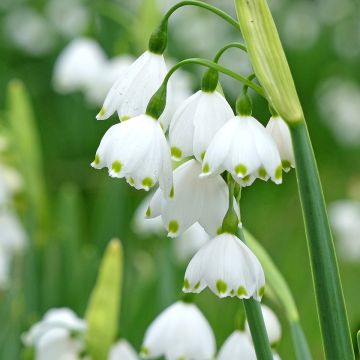
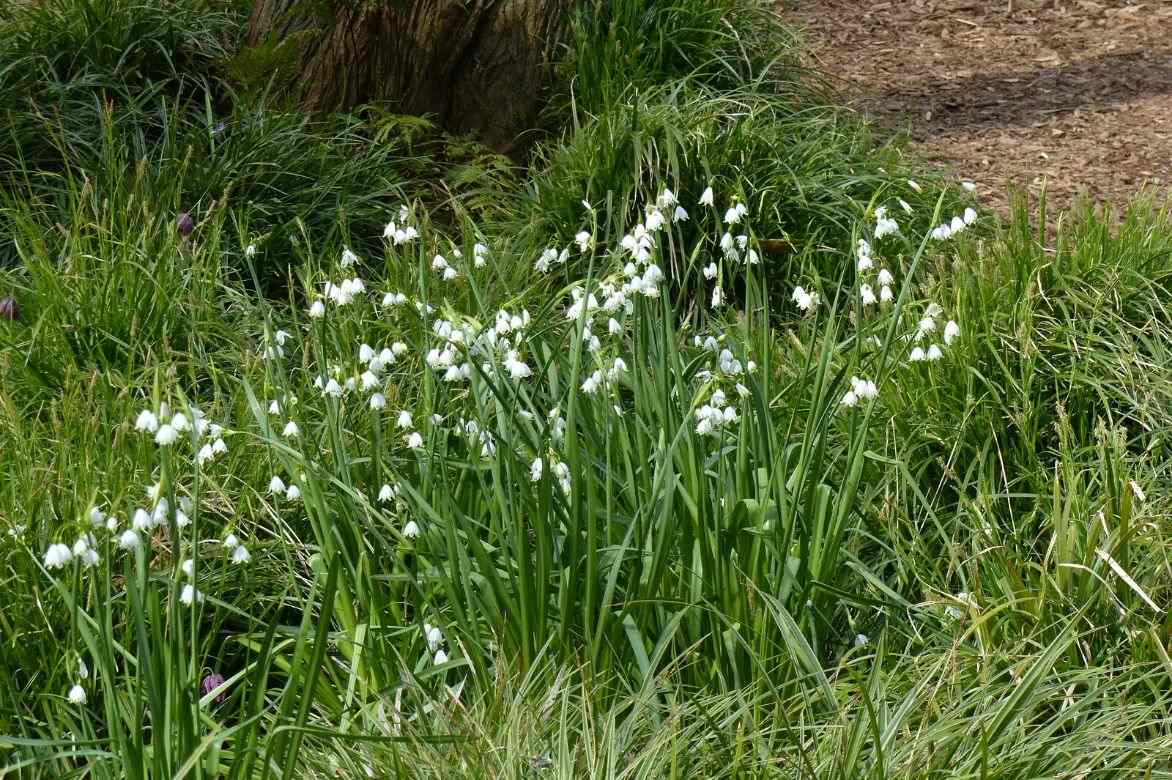
Comments